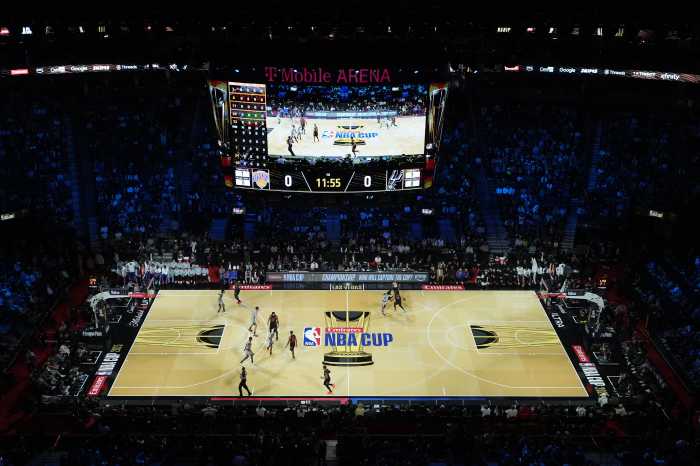Sixty years’ worth of newspaper and magazine clippings rest on a shelf in Werner Kleeman’s home office in Flushing. The dozens upon dozens of articles and book reviews, meticulously arranged by decade, document the rise of a literary master called J.D.
But in the letters, an altogether different picture of Jerome David Salinger emerges – one of a World War II pal who, even as a young solider, marched to the beat of his own drummer. To Kleeman, then a recent German Jewish refugee and U.S. Army draftee, “Jerry” Salinger became a lifelong friend.
Back then, in March of 1944, when Kleeman was promoted to the 4th Infantry Division headquarters near Tiverton, England, soldiers did not routinely wear nametags, Kleeman recalled. When you met someone new you had to ask, “What’s your name?”
It was in this fashion that Kleeman came to meet the young Salinger, stationed with the Counter Intelligence Corps in the 12th Infantry Regiment.
“I could see he was a little bit of an eight ball,” Kleeman admitted, a stack of mint-condition letters and clippings lying on his lap. “He was different. He didn’t close the straps of his helmet. He did what he wanted to do. He was not a performer.”
Before long, Kleeman began to observe his new friend hard at work on a portable typewriter, eagerly devouring publications mailed to him by his mother. The two men, both in their mid-20s, walked up the hill to the mess hall together. And when Salinger was tasked with waterproofing his jeep before the D-Day invasion, Kleeman spent four days at his side.
“He knew I was a refugee,” explained Kleeman, who had spent six weeks in Dachau concentration camp before managing to flee Europe for the U.S. “But it didn’t disturb him.”
“We started to grow together,” Kleeman added.
Indeed, the duo went out on the same boat for training maneuvers and were frequently “in tough spots” surrounded by German artillery fire, Kleeman said.
But, he explained, times were not always tough; they once passed a memorable evening with the great Ernest Hemingway, who spent three months with the 4th Division.
“One night he [Salinger] comes to me – it was very tough going – and he says, ‘Let’s go, come with me, we’ll go and see Hemingway,’” Kleeman recalled with his trademark hearty laugh. “So I took my flashlight, I had my gun, warm coat and we walked, maybe less than a mile, and we found the house, public relations office, we knocked at the side door, and went in. And here was Hemingway, laying flat on a cot. And he made us sit down, he ordered the manager of the office to open champagne. And we spent two and a half hours there.”
The three drank their bubbly out of aluminum canteen cups. To this day, Kleeman still marvels at Salinger’s ability to discuss with Hemingway, at length, the characters from one of Hemingway’s stories.
“He knew all of the people that Hemingway mentioned in that article,” Kleeman recalled with wide eyes. “Two hours later, I wouldn’t remember a name like that!”
Salinger and Kleeman went to Germany together in September of ’44 – the former to search for spies, the latter as a translator. It was months later, just before the war ended, that Kleeman penned the first of many letters to his army buddy.
Salinger’s prompt response, dated April 25, 1945, took a year to reach Kleeman. Upon hearing of his friend’s month-long hospitalization due to appendicitis, Salinger wittily noted that “things look dreary for you in the bed-pan circuit, but I have hopes that you’ll get a pleasant reassignment.”
After some updates on mutual friends, including information on Hemingway’s whereabouts – Cuba, it turned out – Salinger told Kleeman that he missed him and concluded, “We must certainly have a few drinks in New York one day.”
Well, years passed, and letters were exchanged – most of which were initiated by Kleeman – and that New York drink was never shared. Indeed, one meeting was postponed by Salinger because he was “working on a book and I’m afraid to leave it alone till it’s finished.” “The Catcher in the Rye” debuted a year later.
“I knew right away it was his life story,” Kleeman said of the book, his favorite of Salinger’s works.
Eventually, Kleeman made his way to New Hampshire to visit his old friend.
“I went under the experience, if you find your foxhole in the army on a blackout night, you can find anybody,” Kleeman exclaimed with his laugh, noting that he was never surprised, nor insulted, by Salinger’s solitude.
Peering out from his balcony on those few occasions, in between their letter-writing, Salinger would eagerly beckon for his friend to enter. It was there, in New Hampshire, that the drinks would finally flow.
“There were not many guys who knew him like that,” Kleeman said, a few days after grasping that “Jerry” was no longer around. “I can feel privileged that I was an inside, personal friend.”





























